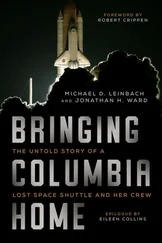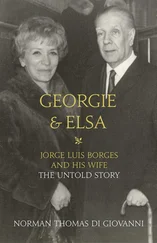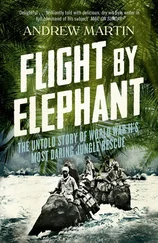Not only did 75 per cent of all ground traffic to support the war travel down this road, but so did all the fuel oil. Only a few feet from the highway, above ground, ran the oil pipeline from the Soviet Union. It followed the road throughout its length to the air base at Bagram and was another tempting target for the Mujahideen.
Apart from the road, the pipeline, the convoys, the bridges and the tunnel, there were two major bases located close to or on the highway. One south of the Hindu Kush was at Bagram which was the most important air base in the country. To the north of the mountains, just south of Pol-i-Khumri, was the largest Soviet/Afghan logistics depot in Afghanistan, divided into two parts, one for fuel and the other for ammunition and vehicles. Although on a grander scale, Cam Ranh Bay and Da Nang had served similar purposes in South Vietnam.
To turn Afghanistan into a Vietnam, and by that I mean forcing a Soviet military withdrawal, so that the Mujahideen were only left with the Afghans to deal with, was by no means the impossibility I had once thought. 1984 was, for me, to be a year of learning from experience what could or could not be achieved. It was to be the year in which training facilities were dramatically increased, the year in which operations against Kabul were stepped up and coordinated, the year in which my first request for the Stinger SAM was rejected, and it was the year in which we made the first tentative moves along the Amu River, aimed at Soviet soil. Those first twelve months confirmed me in my belief that the Soviets were casualty-shy. Many times they would not leave their armored vehicles, or at the last moment push forward an assault to clinch a victory. They were also scared of night operations. Everything stopped at night. There were no convoys, no movement, no attacks, and very few patrols during darkness. This was due to the reduced effectiveness of air cover. Our enemy was frightened to do anything without helicopters hovering nearby, or on immediate call—a trait which mirrored many Americans in Vietnam. My impression was that both these superpowers had been geared up to wage a conventional, or even nuclear, war in Europe, but never a counter-insurgency campaign in Asia. Other things being equal, it is the infantryman on the ground taking the war to the guerrilla that wins, not sitting tight in static posts and blasting the countryside with bombs and rockets. In simple terms both the capitalist and communist governments had asked the impossible in expecting conscripts, for whom the war meant nothing, to take on such a task.
I had to fight a guerrilla war of a thousand cuts. I knew my enemy’s sensitive spots—the Salang Highway, aircraft on the ground, the power supply, the dams, the bridges, the pipelines, the isolated posts or convoys and, at the centre of them all, Kabul. I knew where to wield the knife, but knowmg what to do is a far cry from doing it. Selecting a target, deciding a particular move would be effective, or pinpointing an opponent’s weakness is the easy part of generalship. The hard part is assembling your force in sufficient strength; getting it well trained under reliable leaders; ensuring it is adequately armed, equipped and fed; making certain it understands the plan; and then moving it, covertly, to the right place at the right time. This is the real test of generalship.
As I was about to discover, nothing moves, in peace or war, without money. The Mujahideen could achieve nothing without financial support No matter how brilliant my strategy might be, the implementation depended on the availability of a vast reservoir of cash with which to arm, train and move my forces. Almost half of this money originated from the US taxpayer, with the remainder coming from the Saudi Arabian government or rich Arab individuals.
“Give us the tools, and we will finish the job.”
Winston S. Churchill, broadcast addressed to President Roosevelt, 1941.
IT was always during darkness that the aircraft arrived. Usually at around 9.00 p.m. or just before dawn General Akhtar and I, along with the local CIA staff, would be waiting at Chaklala Air Base for the huge black C-141 Starlifter to taxi up to a secluded part of the terminal. No US Embassy personnel were ever present, either at the planes’ arrival or departure. In order to distract attention it was normal practice on these occasions for the Ambassador to arrange a diplomatic dinner at the Embassy. Although the control tower guided the aircraft in, no Air Force personnel were involved with its reception on the ground. None of the passengers would be subjected to any form of immigration or customs formalities; even the baggage would be handled entirely by the Americans.
The aircraft had flown non-stop from Washington, some 10,000 miles, with KC10 tanker aircraft based in Europe or the Middle East intercepting it for mid-air refuelling. The crew were always in civilian clothes, as were all the passengers. Apart from the US markings on the outside there was no way of identifying the plane. Inside, the enormous transporter had been transformed into a flying hotel and communications centre. Up front, the VIP area was luxuriously appointed with couches, easy chairs, beds and washing facilities—super first class. The rear portion contained the ultra-sophisticated communications that allowed the occupants to speak securely to Washington, or anywhere else in the world. The aircraft was protected by the latest electronic jamming devices and radar to counter incoming missiles. When on the ground, a US crew member was always on board on a 24-hour basis. While in Pakistan the ISI would provide an armed outer perimeter guard, but our personnel could not enter the aircraft.
As the plane came to a stop the waiting cars would creep forward in single file, while outside the base an ISI security vehicle would patrol the route the cortege was about to take to the US Amhassador’s residence in Islamabad. The vehicles were lined up—ISI escort, US security car, VIP car, US security car, ISI escort, and then the others. The man descending the steps was tall, very old, and was nicknamed ‘Cyclone’ in recognition of his propensity for anti-communist outbursts, or the ‘Wanderer’ from the frequency of his flights to CIA stations around the world. He headed the intelligence organization of the most powerful nation on earth. William Casey was President Reagan’s principal adviser on intelligence matters, Director of Central Intelligence reporting to the National Security Committee (NSC), Chairman of the US Intelligence Board, and Director of the Central Intelligence Agency (CIA). He was arriving on one of his annual two-day visits to Pakistan for discussions with General Akhtar and myself on the situation in Afghanistan. Occasionally either his wife or daughter accompanied him. Sometimes his deputy would come, but always he would bring the head of the Afghanistan and Far East desk at CIA headquarters. This man, who is still serving so I will call him Mr A, had been in the US Special Forces and I found him to be one of the very few senior CIA officials whose military knowledge was sound, and to whom we in ISI could relate.
For the next 48 hours security for our guest was a major headache. His two-man advance party would arrive several days beforehand to discuss the arrangements, check the route and test their communications. Mr Casey’s visits were the only time I saw CIA officials ‘flapping’ or badly agitated. Keeping his stay under wraps was far from simple and involved many men, much forethought and meticulous planning. We even went to the extent of referring to our visitor as ‘Mr Black’ in conversation or in writing.
The following morning the CIA and ISI would confront each other across the conference table at the main ISI headquarters in Islamabad. Casey would be flanked by the US Ambassador on one side and Mr A on the other, with the rest of his team, including the local CIA chief and various analysts, on either side. Opposite were General Akhtar, myself, a staff officer and analysts from ISI. I would watch Casey closely. At times he appeared to be dozing while the analysts droned on, but once a topic of importance was mentioned he came alert at once. He had a quick brain, with a bold and ruthless approach to the war against the Soviets. He hated communism. In fact, like many CIA officers, he regarded Afghanistan as the place where America could be avenged for its defeat in Vietnam. The Soviets must pay a high price in blood for their support of the North Vietnamese was his oft-repeated view. “Those bastards must pay,” summed up his philosophy on the war, and he appeared none too squeamish about the methods to be used. Probably his years making millions as a New York businessman had added that callous, combative streak to his character.
Читать дальше












